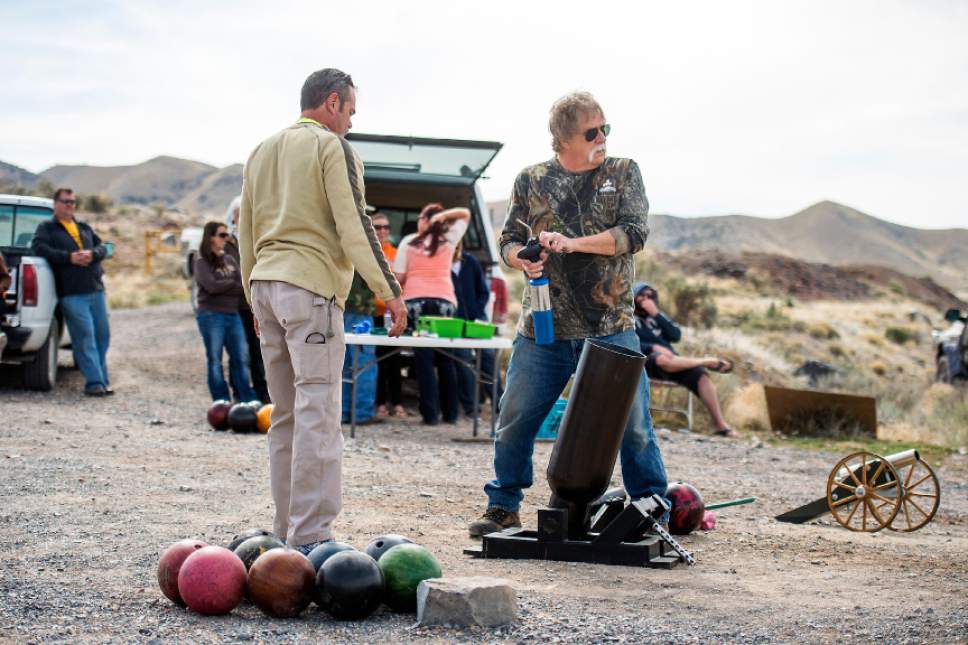This is an archived article that was published on sltrib.com in 2016, and information in the article may be outdated. It is provided only for personal research purposes and may not be reprinted.
A few months after returning from my LDS mission, I was invited to attend the ward of a pre-mission friend. He went to Alaska, I went to South America, and we hadn't seen each other since.
When I showed up (on time), Brad paused and gave me the once-over. I could almost read his mind: "Kirb's wearing a green shirt."
Me: "You're still wearing a white shirt."
Him: "The way I see it, when President Kimball wears a colored shirt to church, so will I."
I'm not sure when Mormons adopted a specific uniform for church service. Referred to as "priesthood attire," it consists at a minimum of a white shirt, conservative necktie and a dark suit. Like "The Blues Brothers," only considerably less cool.
I knew what I was getting into when I went on a mission, so I packed some articles of individuality — a "Bullwinkle" pin in place of a Duty to God award, a Louis Armstrong pin to substitute for the trumpet-blowing Angel Moroni pin other elders seemed so fond of. And a necktie sporting the barely visible Coca-Cola logo.
The tie was a personal favorite until an overzealous zone leader cut it in half when I wouldn't stop wearing it. Since half his wardrobe ended up being a suit coat and a pair of really short pants, we came out even.
I've always been leery of any job that requires the wearing of a uniform. No matter how cool it looks, a uniform is the first indication that eventually the person wearing it will be asked/forced to do something unappealing.
This was certainly true of the army, law enforcement, missionary work and janitorial services. A uniform means being at someone else's — invariably a person who thinks they're smarter than they really are — beck and call.
For pathologically uncooperative individuals like myself, a uniform bodes ill. It's a fashion announcement that I'm going to at some point get into trouble with those who find the particulars of the uniform every bit as important as the job itself.
When I was a Cub Scout, I had a den leader who was obsessive to the point of mental illness about the proper wearing of the cub neckerchief. After one den meeting where I showed up with the neckerchief on my dog, we did not get along well.
This is not to say that I didn't try, but in order for me to be at ease with what I was doing I had to permit myself some form of individuality.
As a cop, I once wore a "D. Vader" name tag instead of "R. Kirby" for nearly a year before anyone noticed. When ordered to change it, I got one that said "F. Flintstone." That lasted a week. Even so, it was probably the happiest time of my police career.
Of them all, missionary work was the toughest. I had to wear the same thing every day. This turned out to be harder than expected. I hated having something cinched around my neck.
Two years of that was enough. When I got home, I vowed to be done with neckties. If I don't have to wear one — meaning that my wife won't get mad — then I don't. The same with white shirts.
Besides, it's not required to wear those things in order to attend church. Guys just do it … well, because it's "strongly" encouraged.
Even church employees aren't required to wear white shirts, although most of them do. Know why they aren't "required"? Because if they were, they'd be a uniform and therefore would have to be supplied by the "company," just as they were in the army, police work, and toilet scrubbing.
It's a lot more problematic than people think. "Priesthood attire" is something women who want to be ordained should take into consideration.
Robert Kirby can be reached at rkirby@sltrib.com or facebook.com/stillnotpatbagley.



